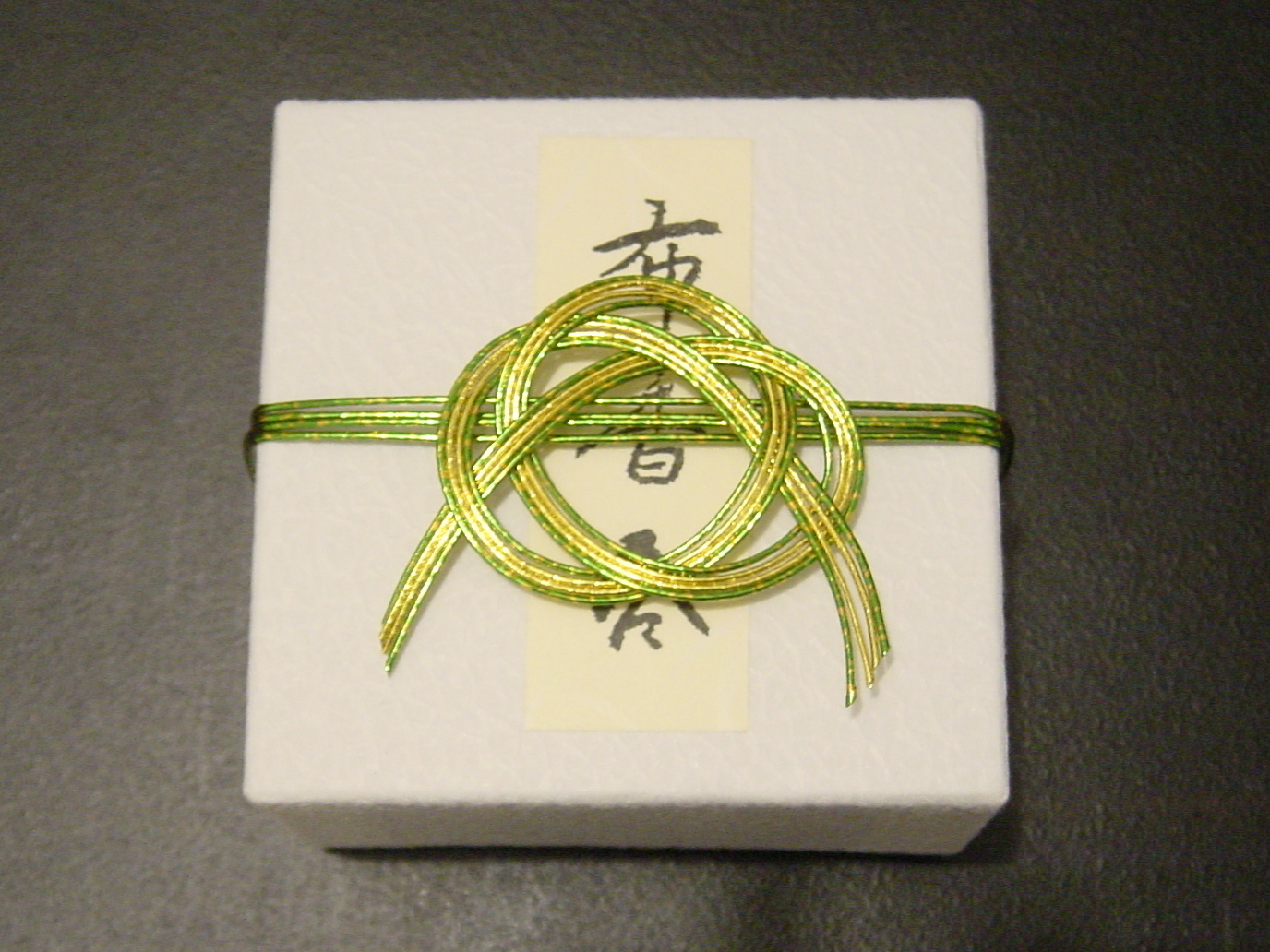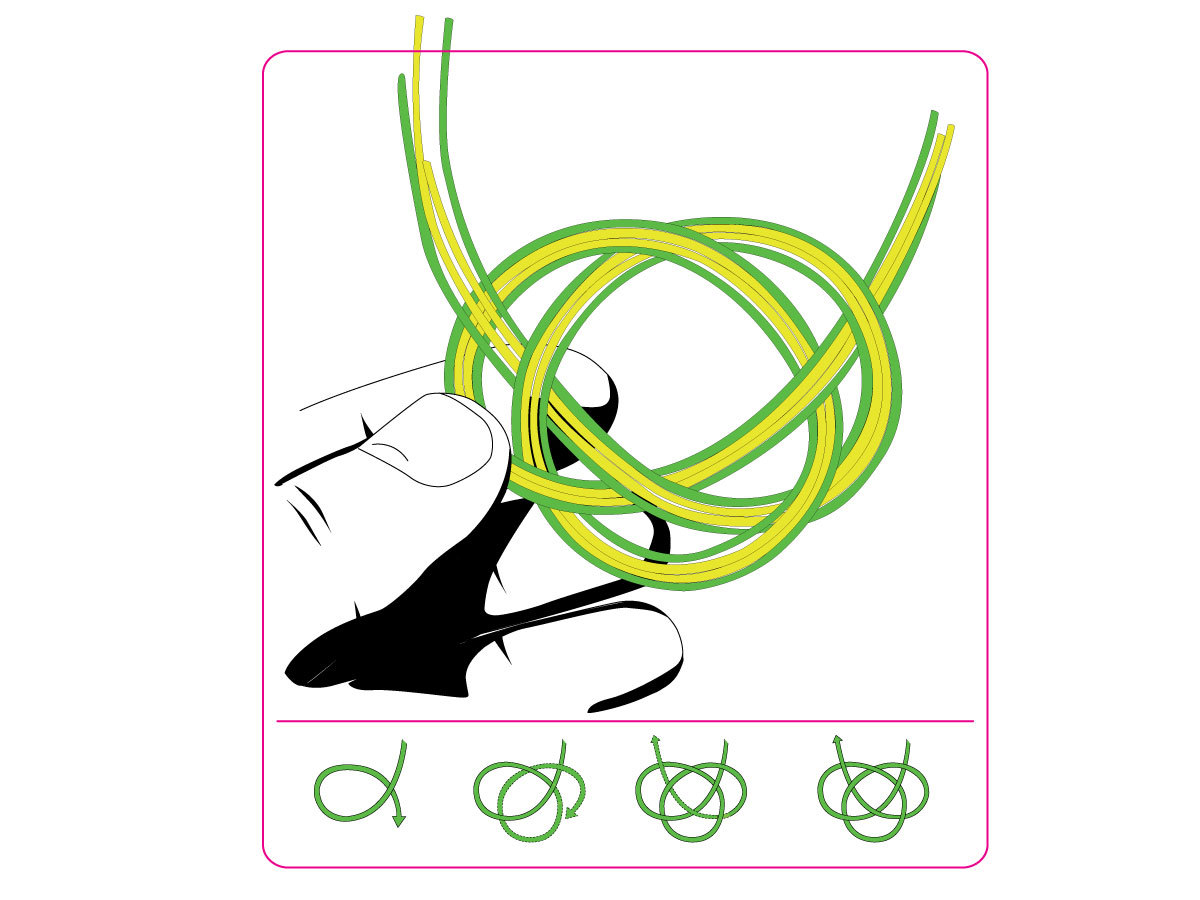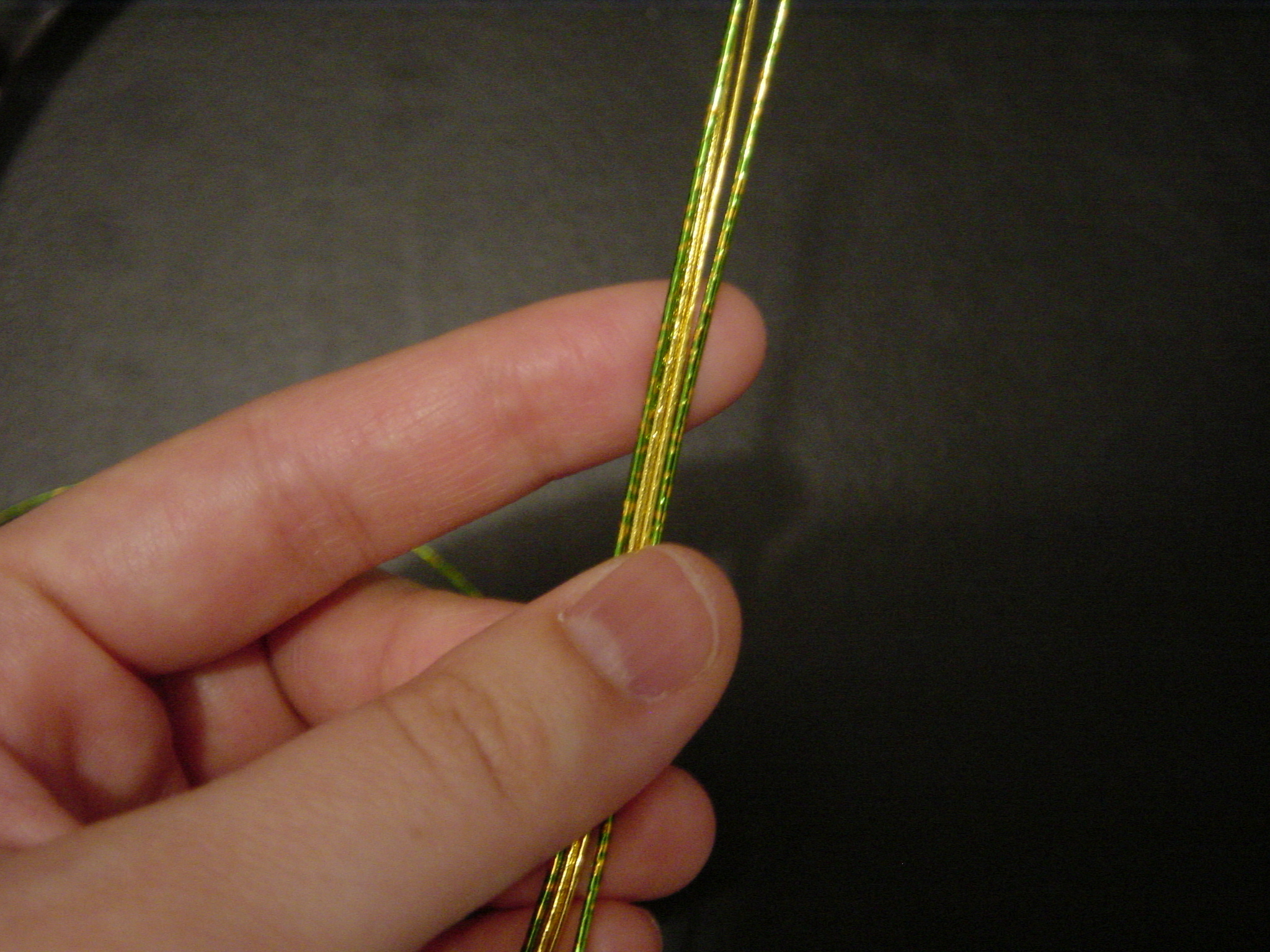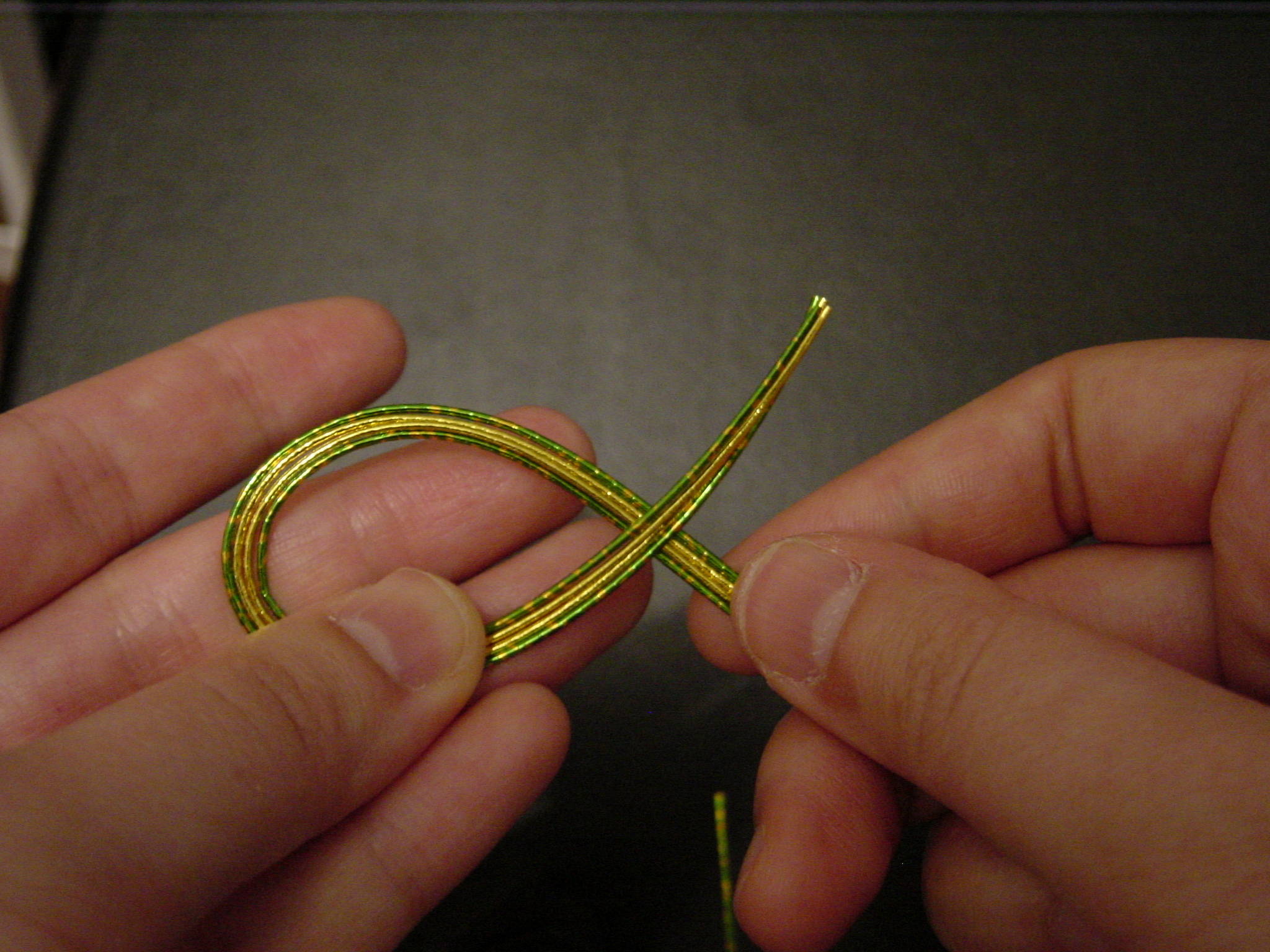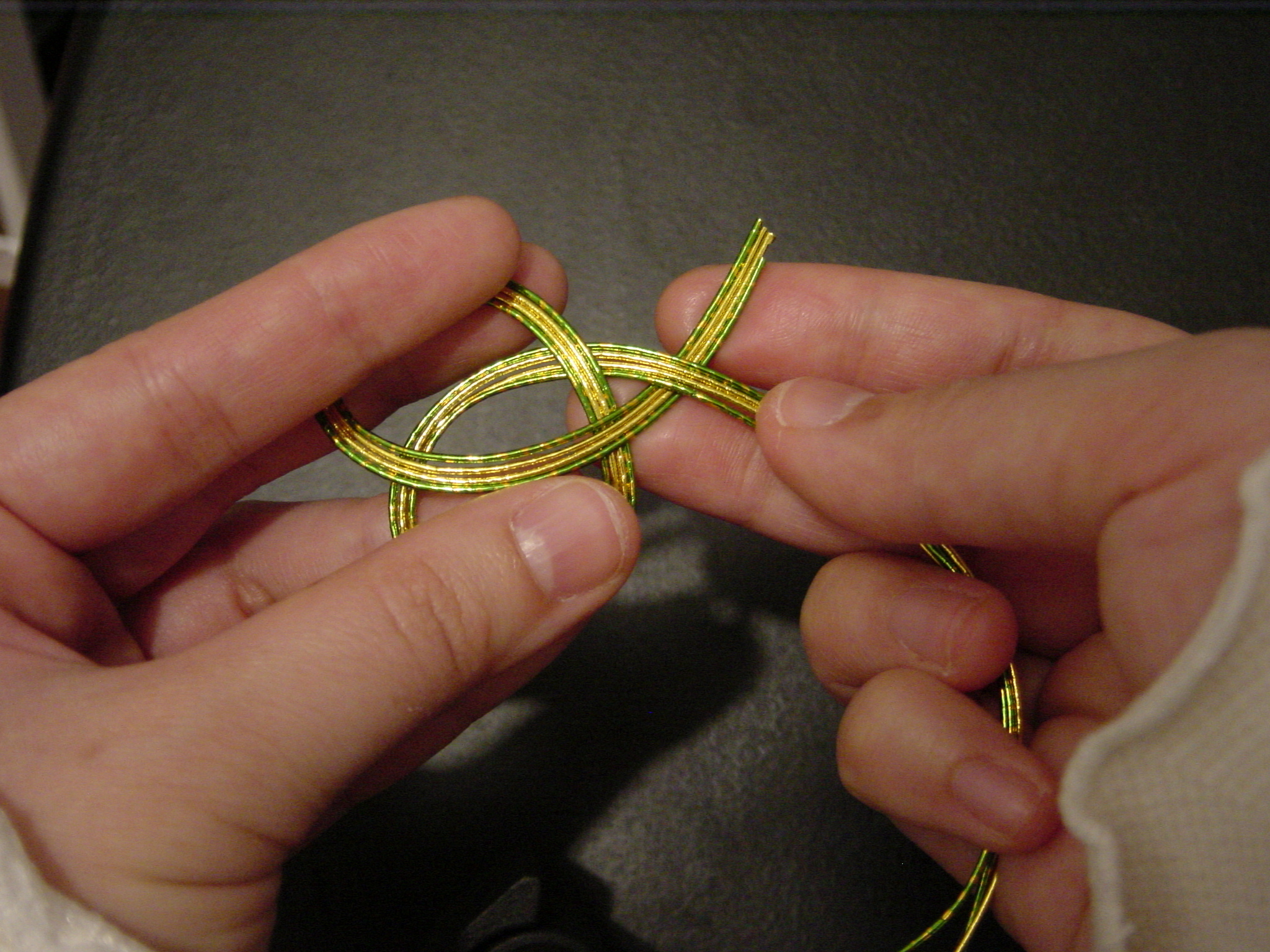Mizuhiki plays an important role in Japanese culture as a symbol of affection, warmth, and togetherness. Made from washi, or Japanese paper, Mizuhiki is a colorful twine that is tied in knots to decorate gifts. Each knot has a meaning and is used for a specific event (wedding ceremony, funeral service, birth, visiting someone at the hospital, etc.). Mizuhiki knots are closely associated with the Japanese word musubo (meaning “connection” or “tying”) because tying a Mizuhiki knot connects people and ties them together.
History of Mizuhiki: In 607 AD, a Japanese delegate returned from China with a gift for the Japanese emperor. The gift was decorated with a red and white twine knot symbolizing “safe journey” for the delegate. The Japanese began recreating the knot from washi, starting a tradition of presenting a gift box with a twine or Mizuhiki knot.


